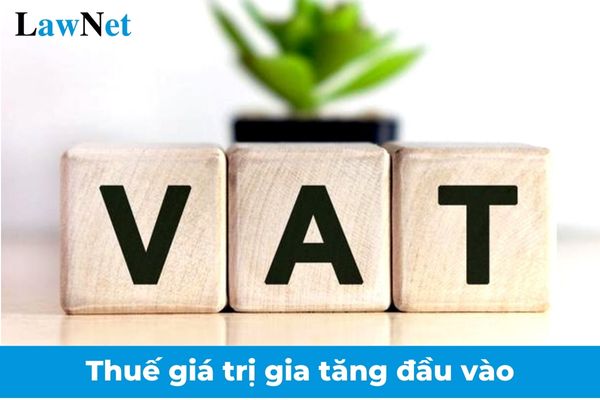From July 1, 2025, what are regulations on handling of the residual input VAT at the end of a month/quarter in Vietnam?
From July 1, 2025, what are regulations on handling of the residual input VAT at the end of a month/quarter in Vietnam?
Pursuant to point đ clause 1 Article 14 of the Law on Value-Added Tax 2024 (effective from July 1, 2025), the regulation on input value-added tax deduction is as follows:
Deduction of Input Value-Added Tax
- Business establishments that pay value-added tax by the deduction method are allowed to deduct the input value-added tax as follows:
...
đ) The input value-added tax arising in a particular month or quarter shall be declared and deducted when determining the payable tax amount for that month or quarter. The input value-added tax not fully deducted in a month or quarter shall be carried over for deduction in the following month or quarter.
In cases where a business establishment discovers incorrect or omitted amounts of input value-added tax in their declaration and deduction, they can correct this before a tax examination or inspection decision is announced by the tax authority or competent agency as follows:
Taxpayers make supplementary declarations at the end of a month/quarter in which the incorrect or omitted input value-added tax arose. If the incorrect or omitted declaration results in an increase in the payable tax amount or a decrease in the refundable amount, the taxpayer must pay the increased tax amount or recover the refunded amount, including late payment fees to the state budget (if any).
...
Thus, from July 1, 2025, the input value-added tax not fully deducted in a month or quarter will be carried over for deduction in the following month or quarter.

From July 1, 2025, what are regulations on handling of the residual input VAT at the end of a month/quarter in Vietnam? (Image from the Internet)
What are conditions for a business establishment to apply the credit-invoice method in Vietnam?
Pursuant to clause 2 Article 11 of the Law on Value-Added Tax 2024 (effective from July 1, 2025), a business establishment applying the credit-invoice method must meet the following conditions:
Business establishments must fully implement accounting policies, invoices, and documents according to the regulations of law on accounting, invoices, and documents, including:
- Business establishments with an annual revenue from the sale of goods, provision of services from 01 billion VND or more, except households and individuals engaged in production and business;
- Business establishments voluntarily applying the credit-invoice method, excluding households and individuals engaged in production and business;
In addition, foreign organizations and individuals supplying goods and services for the purpose of exploration, development, and exploitation of oil and gas fields in Vietnam shall pay tax by the deduction method declared, deducted, and paid on behalf of them by the Vietnamese party.
What are regulations on the use of invoices and documents of business establishments using the credit-invoice method in Vietnam?
Pursuant to clause 1 Article 16 of the Law on Value-Added Tax 2024 (effective from July 1, 2025) as follows:
Invoices and Documents
1. The purchase and sale of goods and services must have invoices and documents in accordance with the law, and the following provisions:
a) Business establishments applying the credit-invoice method use value-added tax invoices. In cases where goods and services subject to value-added tax are sold but the value-added tax is not recorded on the value-added tax invoice, the output value-added tax shall be determined by multiplying the payment recorded on the invoice by the value-added tax rate, except as prescribed in clause 2 of this Article;
b) Business establishments using the direct calculation method use sales invoices.
...
Thus, business establishments applying the credit-invoice method will use value-added tax invoices.
In cases where goods and services subject to value-added tax are sold but the value-added tax is not recorded on the value-added tax invoice, the output value-added tax shall be determined by multiplying the payment recorded on the invoice by the value-added tax rate, except in cases where the business establishments use the direct calculation method and use sales invoices.
What are regulations on the conditions for deduction of input VAT in Vietnam?
Pursuant to clause 2 Article 14 of the Law on Value-Added Tax 2024 (effective from July 1, 2025) the conditions for deduction of input VAT are regulated as follows:
- There must be a value-added tax invoice for the purchase of goods, services, or a document proving the payment of value-added tax at the import stage or a document proving the payment of value-added tax on behalf of a foreign party as specified in clause 3 and clause 4 Article 4 of the Law on Value-Added Tax 2024. The Minister of Finance prescribes the document for value-added tax payment on behalf of the foreign party;
- There must be non-cash payment documents for the purchase of goods and services, except for certain special cases as prescribed by the Government of Vietnam;
- For exported goods and services, in addition to the conditions specified in points a and b clause 2 Article 14 of the Law on Value-Added Tax 2024, there must also be: a contract with the foreign party for the sale, processing of goods, or provision of services; sales invoices or service provision invoices; non-cash payment documents; customs declarations for exported goods; packing lists, bill of lading, insurance documents (if any). The Government of Vietnam prescribes the conditions for deductions in the case of exporting goods via foreign e-commerce platforms and other specific cases.

